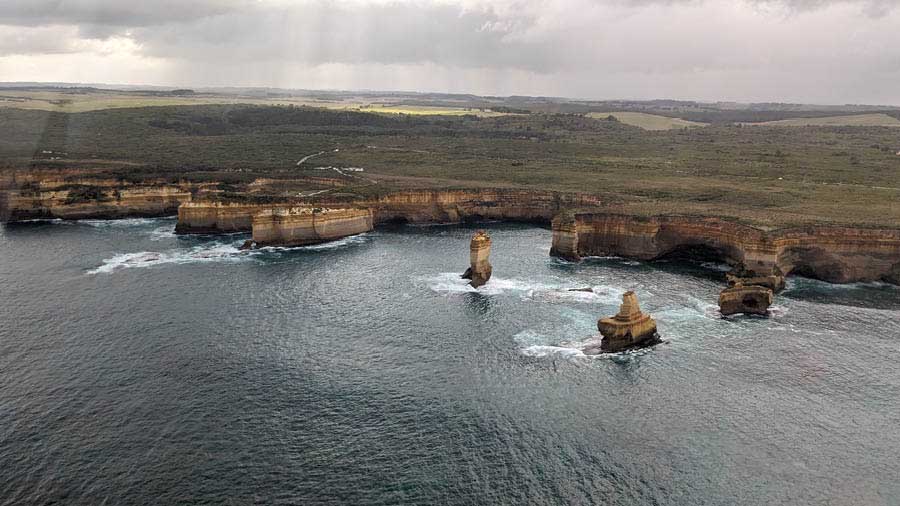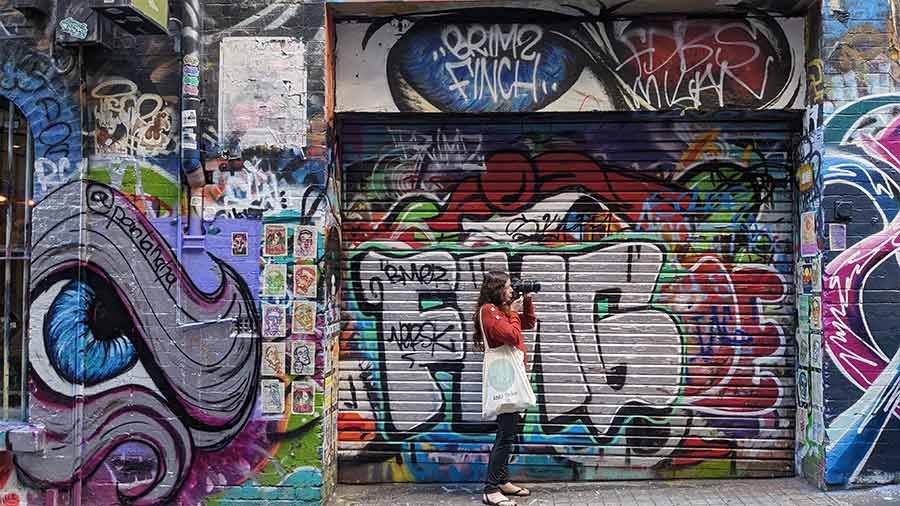On a rainy day in Melbourne, Michelle and I set out for the Great Ocean Road. The sky was overcast with dark clouds, and it didn’t look like the weather would turn. We had a helicopter ride over the Twelve Apostles scheduled for that afternoon, which was unlikely to happen if it continued to rain. Feeling a bit disheartened, we stopped in Colac along the way for some meat-pie, digging our teeth into the flaky crust that gave way to steaming minced meat gravy and cheese. It was during this simple meal that we made a spur-of-the-moment decision to visit Melba Gully. A decision we didn’t regret.
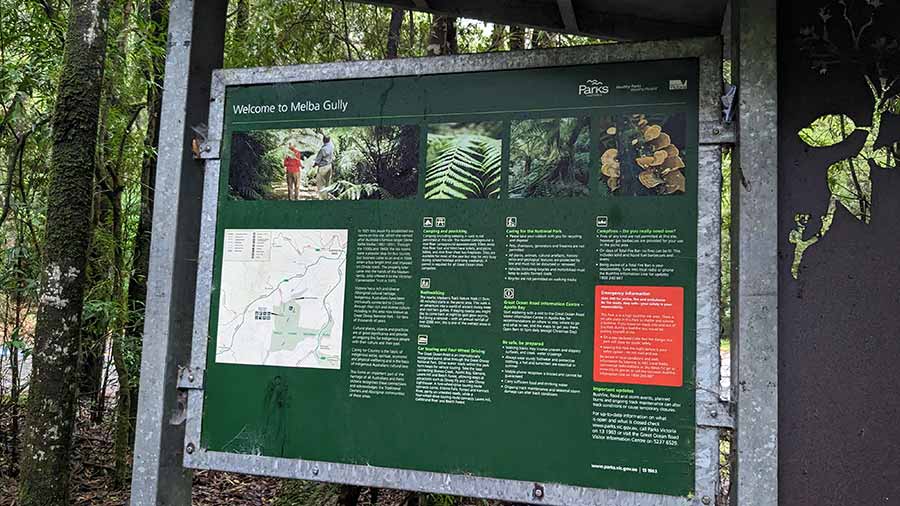
All about Melba Gully National Park - a board at the entrance to the trail
Melba Gully National Park is a hidden gem along the Great Ocean Road route. The gully is not likely to feature on the regular tourist’s itinerary but if you have time to spare (and an adventurous spirit), mark it on your map. If it’s a rainy day, then even better, because your chances of spotting the elusive Otway Black Snail just got better.
Named after Australia’s famous singer Dame Nellie Melba, the gully is one of the wettest places in Victoria, home to a dense rainforest of Myrtle Beech, Blackwood and tree ferns with an understorey of low ferns and mosses.
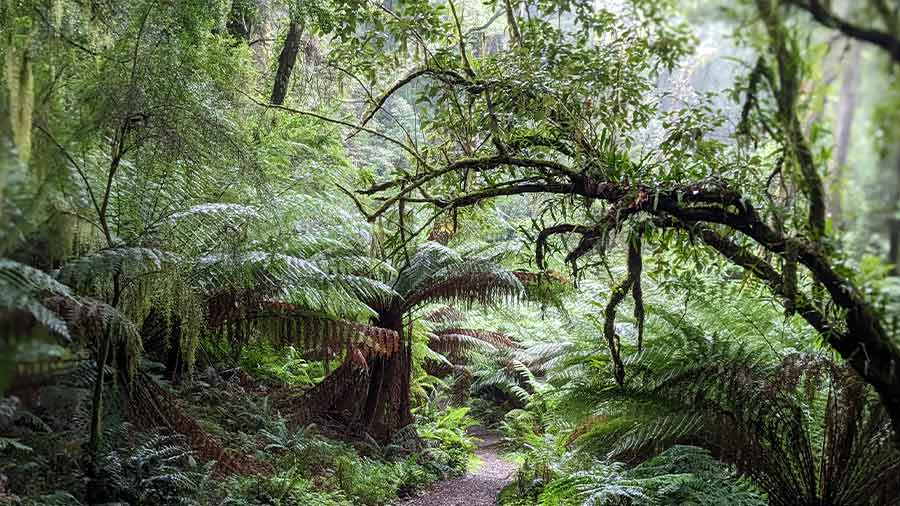
The rainforest is home to Myrtle Beech, Blackwood and tree ferns with an understorey of low ferns and mosses
The rainforest’s canvas boasts a myriad of greens, each blending with the other like an artist’s masterstroke. There is the rich, deep emerald green of ancient Myrtle Beech trees. Like guardians of the forest, they stand tall and proud, their lush canopies reaching out to touch the skies. Underfoot is a velvety carpet of mosses. And in the midst of the forest’s secrets lie hidden pockets of mystery, where the light dares not trespass. Here, the colours of the ferns take on a more subdued tone. Yet, even amidst the shadows, life blossoms. The tender shoots of new leaves unfurl, their hue a vibrant lime green.
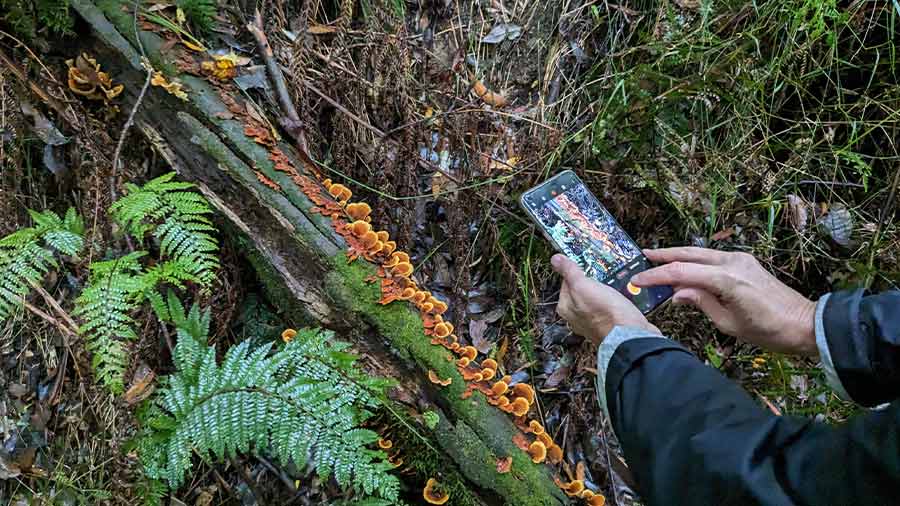
Look around and you will spot dark or orange wild mushrooms, their conical shapes filtering water into the earth and barks
We walk as slow as snails, careful not to stamp on any, though it is quite impossible to know if one did. The rainforest is full of life — from the treetops to the forest floor. So take a moment to stop, look and listen. Look up and you may see Yellow-Tailed Black Cockatoos, or tiny robins and fantails flitting through the smaller trees. Look down and you will spot dark or orange wild mushrooms, their conical shapes filtering water into the earth. The understorey is home to sugar gliders, possums, insects, and the mouse-like Antechinus scurrying around hunting for spiders and beetles. At night, one can spot native glowworms twinkling along the embankments.
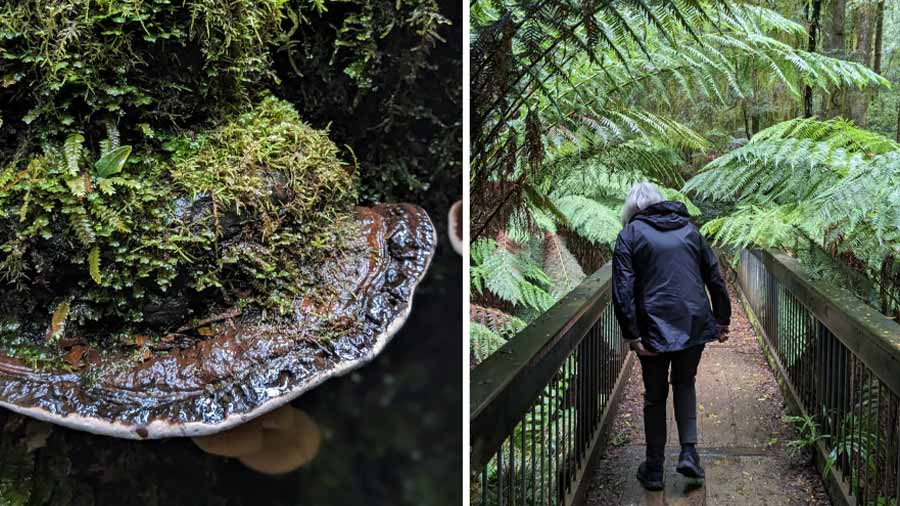
A shelf mushroom and a bridge within the park
Half an hour into the walk, there is still no sign of the rare and endangered carnivorous Otway Black Snail. We turn a corner and a little bridge appears out of nowhere. As Michelle and I draw nearer, the gentle babble of a brook turns into a cascading chorus… we stand in silence, allowing ourselves to be carried away by the symphony of forest sounds.
We are almost at the end of the trail, resigned to our fate, when I spot something moving in the shadows of the damp and decaying leaf litter. There nestled amidst the wet earth and hidden from the world’s gaze is the elusive Otway Black Snail, found only in the hallowed grounds of the Otway ranges of Victoria, Australia. As we crouch down to marvel at it, it seems to sense our presence. Slowly but surely, a long, graceful neck emerges from the confines of the shell, followed by a tiny head crowned with tentacles. With an air of mutual astonishment, the Otway Black Snail turns its gaze upon us.
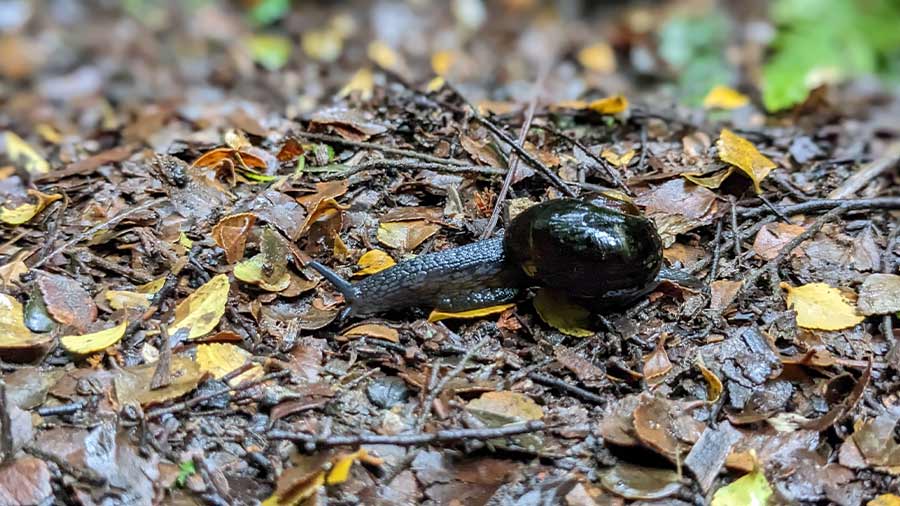
A sighting of the Otway Black Snail. The shell, positioned to the rear of the snail’s body, is round with four whorls (spirals)
In that intimate moment, we felt a deep connection with this creature — one of those times when nature grants a fleeting glimpse into its most guarded secrets. It was as if the universe had conspired to bring us together, the wanderers and the wanderer. The Otway Black Snail, a humble ambassador of Melba Gully’s hidden wonders, reminded us that even in places of perceived finality, there could be miracles waiting to be discovered.
We looked up at the sky and the clouds had cleared, signalling us to hurry forth for our next adventure.

